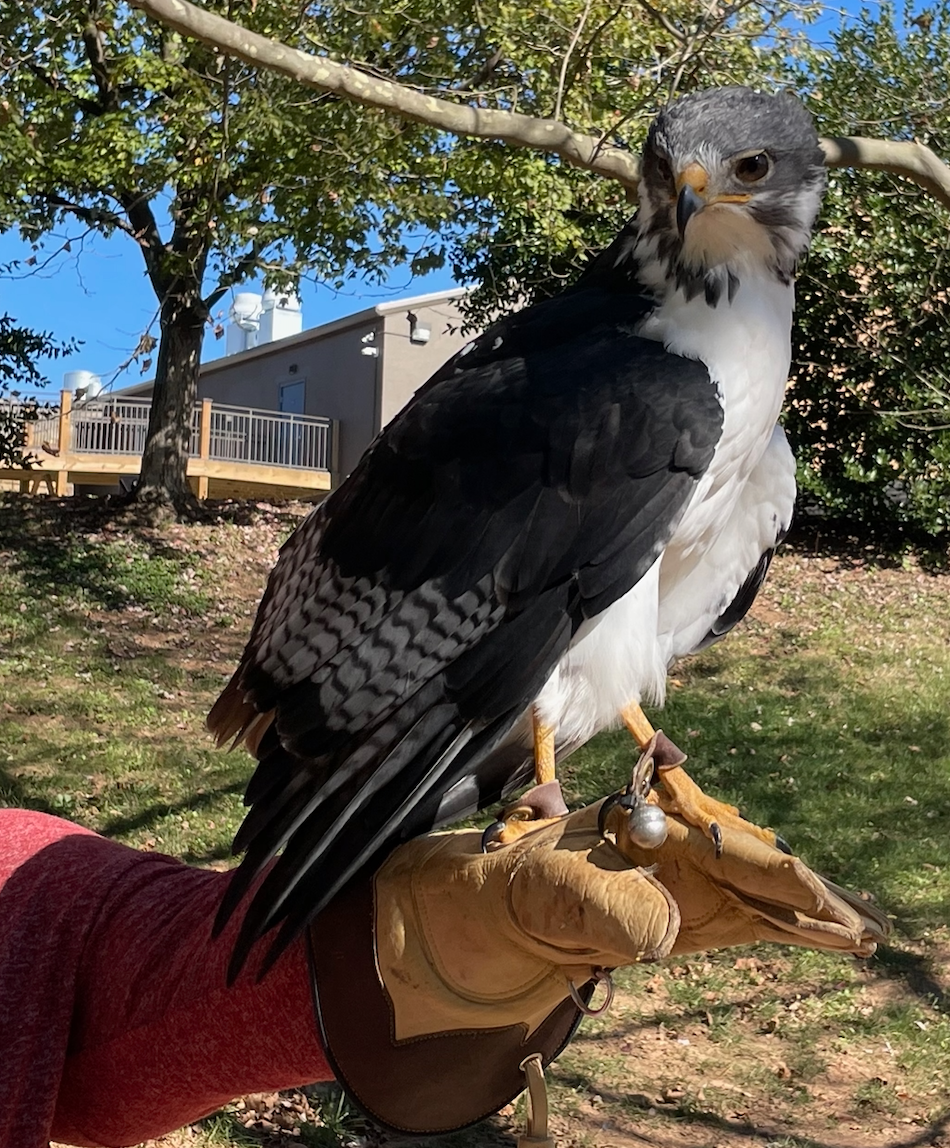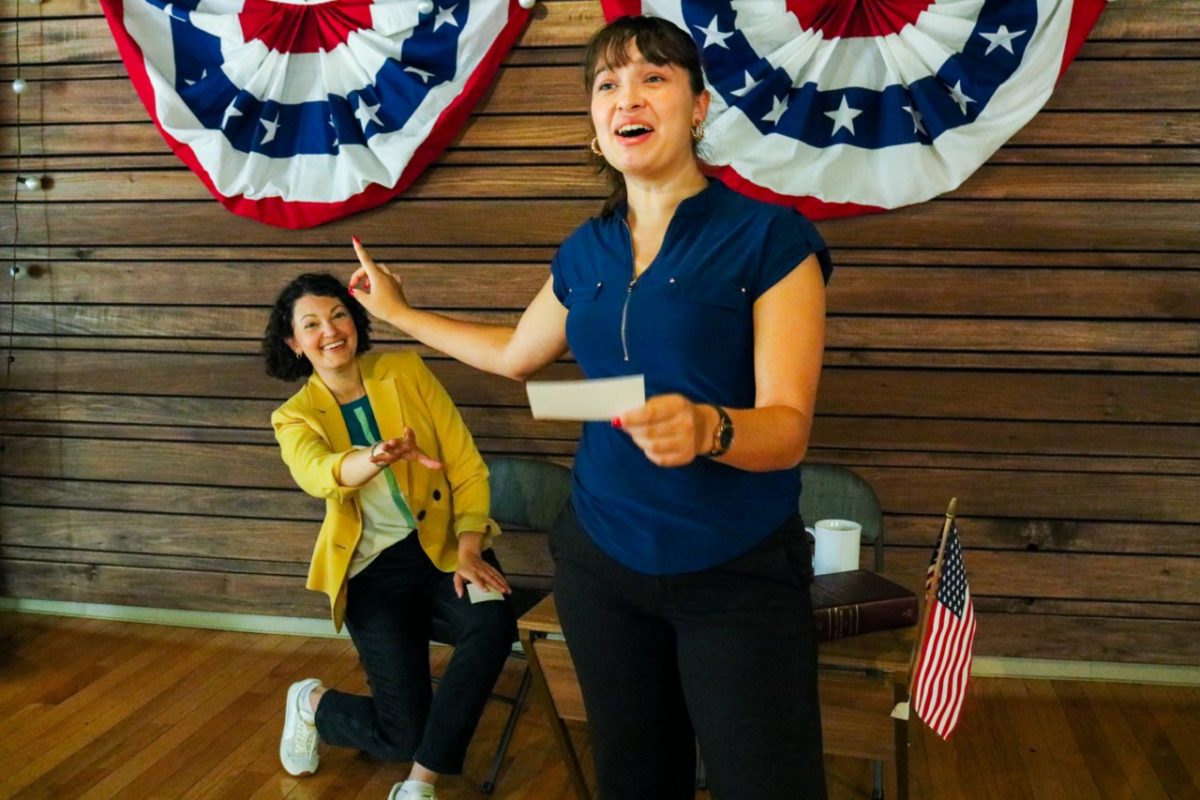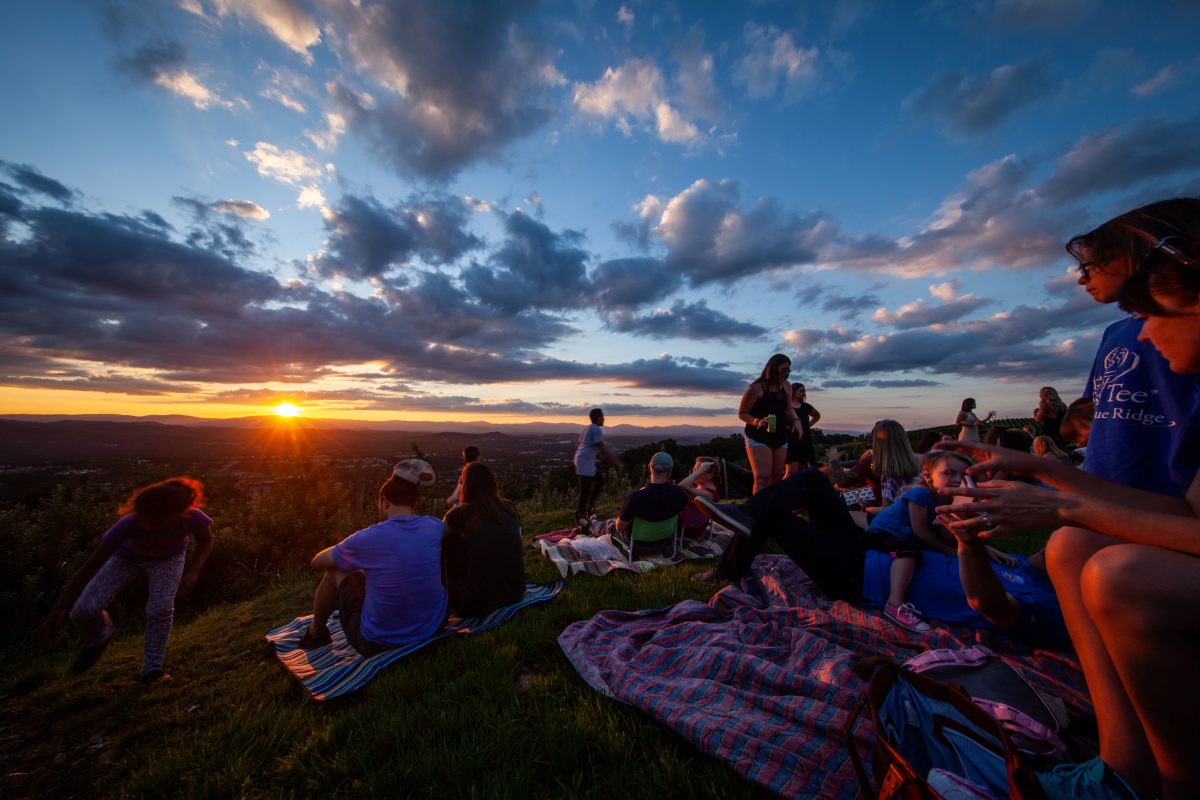A delightful side effect of writing this column is that people in my life now give me ideas based on their bucket lists and more obscure interests. When a friend said she’d always wanted to try falconry and asked if I would join her, “Heck yeah!” was my nigh-instant response.
Like many wheezy, middle-aged folks, the pandemic afforded me time to become emotionally invested in the birds frequenting the feeders on my deck—to the extent that I intervened when a hawk was trying to make off with one of my mourning dove friends.
In my youth, the 1982 cult classic The Beastmaster tickled my imagination. I longed to have similar furry and feathered friends, like Dar’s slippery-pawed ferrets Kodo and Podo and his majestic eagle Sharak, whose eyes he could see through. At every ren faire and theme park my family visited, the raptor shows were a must. This is all to say I’ve always been enthralled by birds of prey yet never knew much about them, until now.
What
The Falconry Experience at Boar’s Head.
Why
Birds of prey are very cool.
How it went
While one can’t literally learn to fly by simply touching a falcon, figuratively I floated home.
At the Boar’s Head Outfitters desk, we met our falconer. He gave us each a falcon glove and bottled water before we headed out. In hindsight, I wish I’d left the water behind. Yes, I drank it. Yes, hydration is essential, but I’m a Gen Xer (therefore, part camel), and can make it an hour-and-a-half without needing water. What I found myself wanting during the experience was free hands for bird-holding or picture-taking.
As we walked to the falcon house (obvi not the technical term), our guide provided info about American falconry and regaled us with stories about the Boar’s Head’s falcons, Wily and Goldie. Mischievous Wily (think Wile E. Coyote vibes), an African auger buzzard, would be our companion for the experience. Falconry includes different types of birds of prey, such as falcons, hawks, and others, like our buzzard Wily, who is more akin to a red-tailed hawk. After collecting Wily from his abode, we walked to a picturesque spot near a pond where our falconer showed us what Wily can do.
Tempted by bits of unhatched chicks still dripping with yolk (yes, the visuals still haunt my dreams and inspire the urge to rewash my hands to avoid salmonella), Wily flew back and forth between the falconer’s glove and nearby trees. Our guide explained that it’s the food that motivates the birds, not a relationship with the handler, and that one must walk a careful line when feeding Wily to avoid him getting “fed up.” If a falcon gets full, the bird is not motivated to go back to the handler.
Soon our falconer invited us to hold Wily on our gloved wrists, after he tempted him to join us with more chicken. Even though we’d been awestruck by the beating of Wily’s wings as he flew over and around us, nothing prepared me for the rush of him alighting on my outstretched arm. Falcons pack a lot of awesome power per inch, weighing in at just a couple pounds though they have about 200 PSI grip strength in their talons. It felt humbling for Wily to hold onto my arm. At one point, he did his bat impression, dangling from my arm inverted.
As I looked to our falcon whisperer for instructions, Wily let go and toppled unceremoniously onto the dirt. Let me tell you, falcons’ extraordinary vision extends to giving superior side-eye. Despite my faux pas, my friend and I must have passed the vibe test, because our falconer commented that Wily spent a lot of time with us during our experience.




